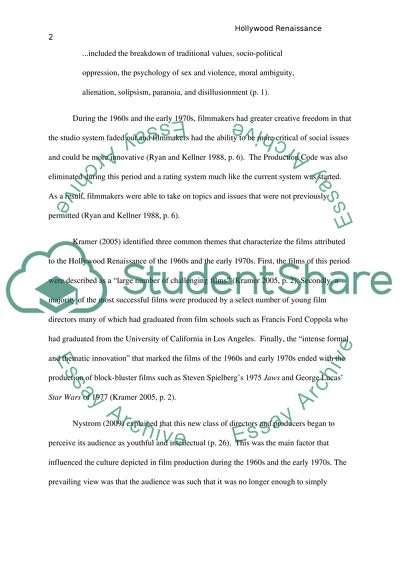Cite this document
(“The Hollywood Renaissance of the 1960s and Early 1970s Essay - 1”, n.d.)
Retrieved from https://studentshare.org/philosophy/1424809-the-hollywood-renaissance-of-the-1960s-and-early-1970s
Retrieved from https://studentshare.org/philosophy/1424809-the-hollywood-renaissance-of-the-1960s-and-early-1970s
(The Hollywood Renaissance of the 1960s and Early 1970s Essay - 1)
https://studentshare.org/philosophy/1424809-the-hollywood-renaissance-of-the-1960s-and-early-1970s.
https://studentshare.org/philosophy/1424809-the-hollywood-renaissance-of-the-1960s-and-early-1970s.
“The Hollywood Renaissance of the 1960s and Early 1970s Essay - 1”, n.d. https://studentshare.org/philosophy/1424809-the-hollywood-renaissance-of-the-1960s-and-early-1970s.


